Scipio Africanus – Rome’s Greatest General Who Defeated Unbeatable Hannibal
Angela Sutherland - AncientPages.com - Scipio Africanus, Publius Cornelius – (237-183 BC) was a Roman general and the greatest of the famous Roman family of the Scipios, aristocrats, and militaries that commanded armies.
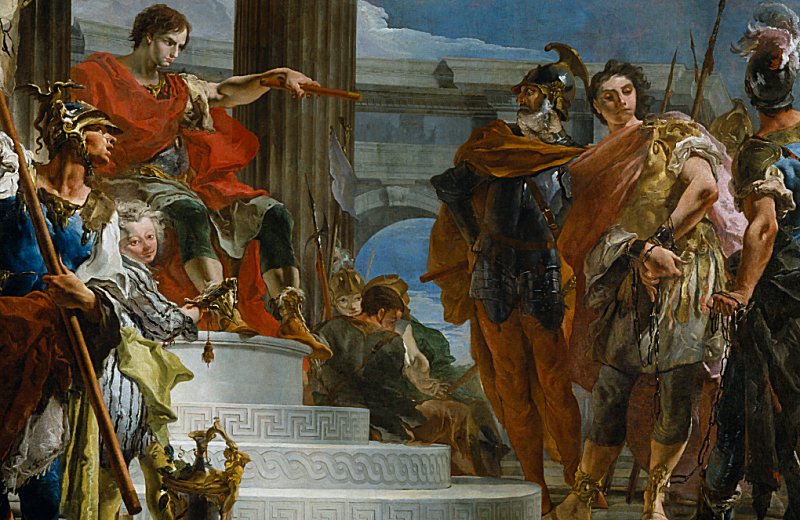 In this painting by Tiepolo, Scipio Africanus is shown releasing the nephew of the Prince of Numidia after he was captured by Roman soldiers. The Walters Art Museum. Image credit: Giovanni Battista Tiepolo - Public Domain
In this painting by Tiepolo, Scipio Africanus is shown releasing the nephew of the Prince of Numidia after he was captured by Roman soldiers. The Walters Art Museum. Image credit: Giovanni Battista Tiepolo - Public Domain
He was a man of great intellect and culture, often harsh and arrogant to his political opponents. Otherwise, he was a kind and sympathetic person towards others.
"The first notice of young Publius Scipio comes during his first military campaign in 218 BC. War had been declared by Rome and Carthage in the spring of 218, following Hannibal Barca's seizure of the Iberian city of Saguntum - a city allied to Rome in 219 BC. Both sides had high hopes for the initial campaign.
Scipio's father had been chosen consul and was initially sent to Iberia to assail Hannibal. Still, when he arrived with his army for a stopover in the allied city of Massilia (modern-day Marseilles), he found that Hannibal had already crossed the Rhone, heading for Italy.
So he sent his brother Cnaeus on to Iberia with his fleet and army and returned by sea to Pisa, from whence he marched with new forces through Etruriaand northern Italy to intercept Hannibal and the Carthaginians near the foot of the Alps.
The two armies met near the Ticinus River. Scipio had around him an elite group of cavalrymen posted by his father, "but when in the course of the battle he saw his father surrounded by the enemy, with only two or three horsemen near him, and dangerously wounded, he first tried to cheer on his own squadron to go to his father's assistance, but when he found them considerably cowed by the numbers of the enemy surrounding them, he appears to have plunged by himself with reckless courage into the midst of the enemy.
Whereupon, his comrades being forced to charge also, the enemy were overawed and divided their ranks to let them pass. Publis the elder, being thus unexpectedly saved, was the first to address his son as his preserver in the hearing of the whole army." 1
Another military encounter took place at Zama in 202 BC when the two great military men met in battle, and after a long fight all day, the Carthaginian ranks broke up.
Scipio conquered Spain for the Romans. On 19 October 202 BC, he finally defeated the great, unbeatable Hannibal, a Punic military commander from Carthage, at the battle of Zama (in what is now Tunisia), Africa.
 Entrance to the Tomb of the Scipios. Image credit: Pippo-b - CC BY-SA 3.0
Entrance to the Tomb of the Scipios. Image credit: Pippo-b - CC BY-SA 3.0
Scipio became the great hero and a powerful symbol of Roman triumph over Carthage. It was a significant, historical event because Hannibal's army was finally overwhelmed. Scipio's peace terms for Hannibal and Carthage were reasonable; he did not sack Carthage like the Senate wanted him to. Instead, he introduced moderate regulations and taxes to the Carthaginians.
His victory over Hannibal ended the Second Punic War and broke the power of ancient Carthage; Rome became the most powerful city in the Mediterranean region.
In honor of his victory, Scipio was called 'Africanus' and was elected consul for the second time in 194 BC. A few years later, Scipio accompanied his brother, Lucius. The latter was in command of the Roman army and sent to Asia Minor to deal with Antiochus III the Great, ruler over the region of Syria and large parts of the rest of western Asia. At Magnesia in 190, the two Scipio brothers defeated the Syrian king and brought his power to an end.
Despite his extraordinary military abilities and accomplishments, Scipio had many powerful political enemies in Rome who did their best to discredit him. Scipio faced charges of bribery and treason and left Rome in 185 B.C.
He was very disappointed with the ungratefulness of the Roman government.
Aware of the political situation in the region, Scipio Africanus warned Rome that Antiochus the Great would soon invade Greece, and so it happened. Scipio accompanied the Roman army to the war against Antiochus.
 Nicolas Poussin's painting of the Continence of Scipio, depicting his return of a captured young woman to her fiancé, having refused to accept her from his troops as a prize of war. Image credit: Nicholas Poussin - Public Domain
Nicolas Poussin's painting of the Continence of Scipio, depicting his return of a captured young woman to her fiancé, having refused to accept her from his troops as a prize of war. Image credit: Nicholas Poussin - Public Domain
At the same time, his enemies were still waiting for a favorable opportunity to get rid of Scipio and even his brother. One of such enemies was Cato the Censor, who started the persecution of all the Cornelii Scipiones, particularly Africanus and his brother, Lucius.
Cato the Censor was victorious in this conflict, for Lucius was stripped of his knight's status in 184 BC, and Scipio Africanus ( about 53 ) died at his estate in Liternum, Campania (now Patria, Italy), circa 183 BC. He did not want to be buried in Rome, so he arranged burial arrangements in Liternum in Campania.
It is said that on his tomb was written:
“Ingrata patria, ne ossa quidem habebis”
(Ungrateful fatherland, you will not even have my bones).
Archaeologists have not yet determined the resting place of Scipio Africanus. The Tomb of the Scipios has been discovered and is open to the public, but Scipio Africanus' remains are not there.
Finding the truth about Scipio Africanus is a challenge; ancient records are lost, and it isn't easy to trace information about him.
However, historical records confirm that, like Alexander the Great, Scipio Africanus never lost a battle or failed in a military encounter.
Updated on June 21, 2022
Written by – A. Sutherland - AncientPages.com Senior Staff Writer
Copyright © AncientPages.com All rights reserved. This material may not be published, broadcast, rewritten or redistributed in whole or part without the express written permission of AncientPages.com
Expand for referencesMore From Ancient Pages
-
 Traces Of The Watchers In Ancient China Shed New Light On This Mysterious Lost Race
Ancient Mysteries | Aug 11, 2018
Traces Of The Watchers In Ancient China Shed New Light On This Mysterious Lost Race
Ancient Mysteries | Aug 11, 2018 -
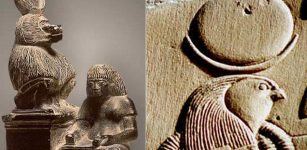 Full Moon In Ancient Myths And Legends Of Our Ancestors
Featured Stories | Nov 14, 2016
Full Moon In Ancient Myths And Legends Of Our Ancestors
Featured Stories | Nov 14, 2016 -
 Unraveling The Mystery Of Ancient ‘False Doorways’
Ancient Mysteries | May 24, 2014
Unraveling The Mystery Of Ancient ‘False Doorways’
Ancient Mysteries | May 24, 2014 -
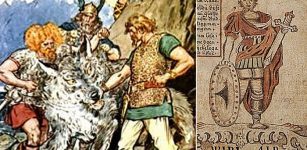 Norse God Tyr Who Gave Viking Warriors Courage And Self-Confidence In Battle
Featured Stories | Mar 7, 2018
Norse God Tyr Who Gave Viking Warriors Courage And Self-Confidence In Battle
Featured Stories | Mar 7, 2018 -
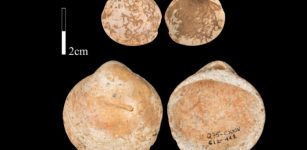 Perforated Shells Were Used By Humans 120,000 Years Ago
Archaeology | Jul 10, 2020
Perforated Shells Were Used By Humans 120,000 Years Ago
Archaeology | Jul 10, 2020 -
 1,200-Year-Old Viking Sword Found By Hiker In Norway
Archaeology | Oct 22, 2015
1,200-Year-Old Viking Sword Found By Hiker In Norway
Archaeology | Oct 22, 2015 -
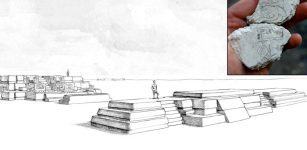 Earliest Evidence Of A 260-Day Maya Calendar Found Inside Guatemalan Pyramid
Archaeology | Apr 14, 2022
Earliest Evidence Of A 260-Day Maya Calendar Found Inside Guatemalan Pyramid
Archaeology | Apr 14, 2022 -
 Moirai (The Fates): Greek Incarnations Of Destiny And Personification Of A Single, Unavoidable Fate
Featured Stories | Aug 1, 2019
Moirai (The Fates): Greek Incarnations Of Destiny And Personification Of A Single, Unavoidable Fate
Featured Stories | Aug 1, 2019 -
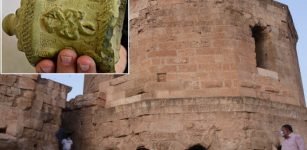 The Main Gate Of Historical 9th-Century Old Harran Palace Unearthed
Archaeology | Oct 25, 2020
The Main Gate Of Historical 9th-Century Old Harran Palace Unearthed
Archaeology | Oct 25, 2020 -
 New Inscriptions, Gold And Paint Showed Thanks To Restoration In Temple Of Edfu
Archaeology | Sep 20, 2024
New Inscriptions, Gold And Paint Showed Thanks To Restoration In Temple Of Edfu
Archaeology | Sep 20, 2024 -
 1,800-Year-Old Military Medal with Medusa Head Unearthed In Ancient City of Perge (Perrhe), Southeastern Turkey
Archaeology | Oct 11, 2022
1,800-Year-Old Military Medal with Medusa Head Unearthed In Ancient City of Perge (Perrhe), Southeastern Turkey
Archaeology | Oct 11, 2022 -
 Nomadic People’s 1,500-Year-Old Imperial Worship Unearthed In Hohhot, Inner Mongolia
Archaeology | Nov 18, 2020
Nomadic People’s 1,500-Year-Old Imperial Worship Unearthed In Hohhot, Inner Mongolia
Archaeology | Nov 18, 2020 -
 European Mythical Creatures Encountered In The Witcher Series
Featured Stories | Feb 4, 2020
European Mythical Creatures Encountered In The Witcher Series
Featured Stories | Feb 4, 2020 -
 Xibalba: Nine-Leveled Underground Place Of Fear Ruled By Lords Of Death In Maya Beliefs
Featured Stories | May 12, 2020
Xibalba: Nine-Leveled Underground Place Of Fear Ruled By Lords Of Death In Maya Beliefs
Featured Stories | May 12, 2020 -
 Giant Balor Of The Evil Eye – Terrifying Fomorian King And Grandfather Of Celtic God Lugh
Celtic Mythology | Apr 30, 2018
Giant Balor Of The Evil Eye – Terrifying Fomorian King And Grandfather Of Celtic God Lugh
Celtic Mythology | Apr 30, 2018 -
 DNA Reveals The History Of Modern And Archaic Humans Is Much Longer And More Complicated Than Previously Thought
DNA | Jan 2, 2025
DNA Reveals The History Of Modern And Archaic Humans Is Much Longer And More Complicated Than Previously Thought
DNA | Jan 2, 2025 -
 Graeae: Three Sisters Of Fate Who Shared One Eye And Tooth In Greek Mythology
Featured Stories | Jun 8, 2016
Graeae: Three Sisters Of Fate Who Shared One Eye And Tooth In Greek Mythology
Featured Stories | Jun 8, 2016 -
 World’s Oldest Human Statue Discovered At Karahan Tepe, Turkey
Archaeology | Oct 30, 2023
World’s Oldest Human Statue Discovered At Karahan Tepe, Turkey
Archaeology | Oct 30, 2023 -
 Strange Medieval Figurine With A Crown On The Head And A Falcon On The Arm – Is It A King Or A Queen?
Archaeology | Dec 16, 2021
Strange Medieval Figurine With A Crown On The Head And A Falcon On The Arm – Is It A King Or A Queen?
Archaeology | Dec 16, 2021 -
 Hopi Ancestors Witnessed Flying Shields In The Skies Over Palitkwapi – The ‘Red City’
Civilizations | Apr 8, 2017
Hopi Ancestors Witnessed Flying Shields In The Skies Over Palitkwapi – The ‘Red City’
Civilizations | Apr 8, 2017

